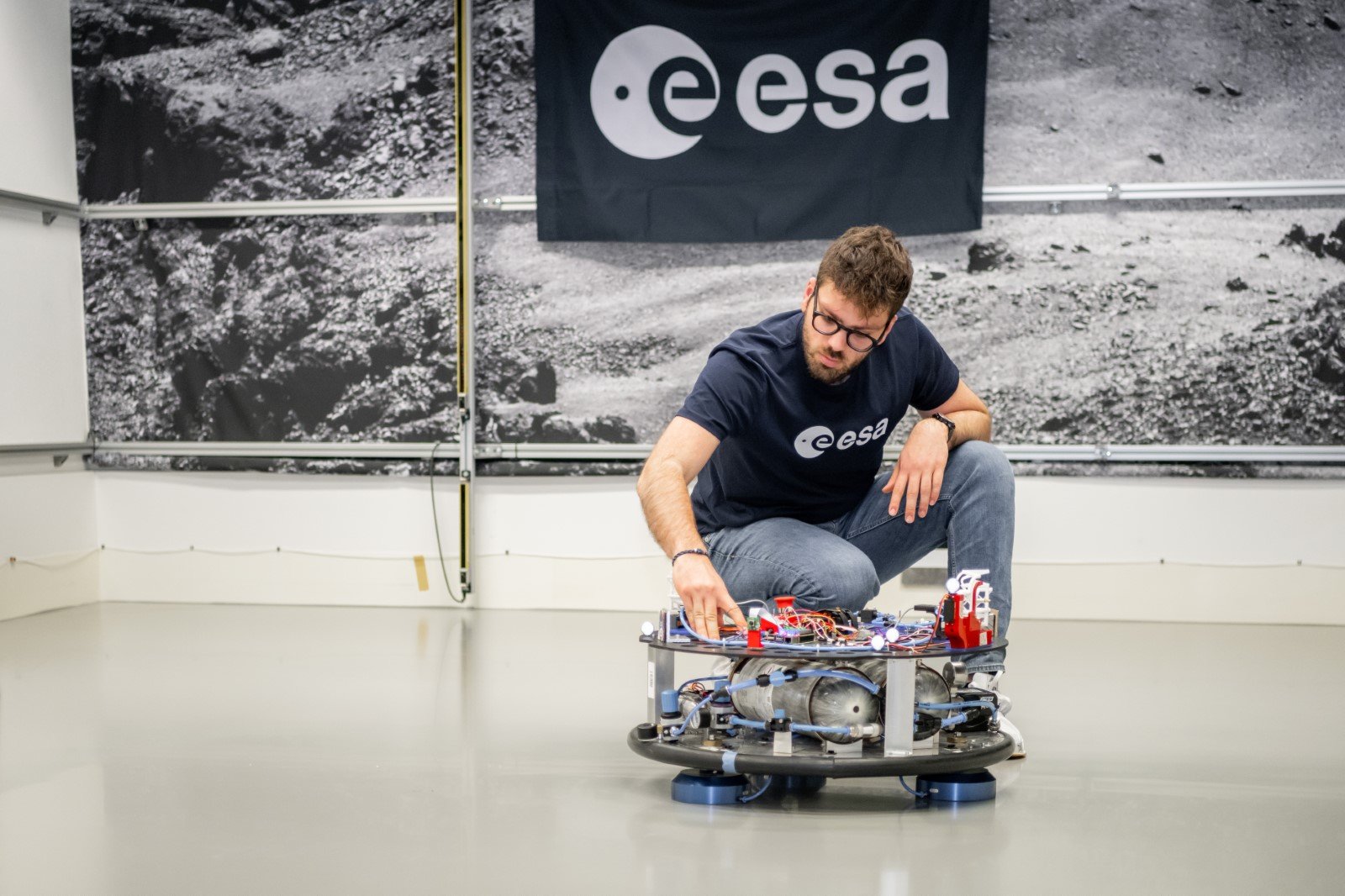Meta Futura: Revolutionising Satellite Mobility
Space technology start-up Meta Futura is reshaping the future of satellite manoeuvrability with innovation that’s as bold as it is transformative.
With over 60,000 active satellites projected to be in space by 2030, the satellite manufacturing market is expected to reach a value of £44 billion. However, once deployed, satellites face significant mobility challenges. Current systems are complex, costly, and bulky, making them very difficult to integrate into small satellites.
To tackle this, Meta Futura has built the most manoeuvrable and agile small satellite in the industry. Its ground-breaking satellite, MetaFlex, offers capabilities unmatched by current satellites - MetaFlex is ten times more manoeuvrable and 30% more reliable than existing satellites.
Prototype in ESA ESTEC’s Orbital Robotics Lab
The core of Meta Futura's technology is its trust vectoring mechanism, which allows the satellite's thrusters to rotate, providing superior manoeuvrability with only two thrusters instead of the 16 typically required. This innovative mechanism is fully 3D printed, making it possible to manufacture components that were previously impossible to create.
Meta Futura's approach to satellite development is also unique. By separating the development of the satellite and the payload, the company can significantly cut down lead times. While traditional satellite development takes 12 to 24 months, Meta Futura's method allows for a lead time of just four months. The result is a highly manoeuvrable, fully standardised satellite that can be mass-manufactured, reducing costs and lead times for customers.
Founded by University of Southampton aerospace engineering students - Pedro Rodriguez Lopez from Spain and Fabrizio Pisani from Italy - Meta Futura's journey began in 2024, during the co-founders' final year at university. With the support of Future Worlds, the University’s startup accelerator, they were able to take their idea to the next level. They pitched their concept to American investors and companies in San Francisco in April 2024, and their hard work paid off.
The team tested their first prototype in microgravity environments at the Surrey Space Centre, based at the University of Surrey. This initial testing was followed by additional tests at the European Space Agency’s European Space Research and Technology Centre (ESTEC) facilities in the Netherlands, where the technology reached Technology Readiness Level 5 (TRL5).
Initial prototype during the testing at Surrey Space Centre
Beyond the technical achievements, the company's growth story is equally impressive. Meta Futura has raised over 300,000 euros in initial funding and has opened offices in Harwell Science and Innovation Campus in Oxfordshire and in Turin, Italy.
The company is now seeking an additional £2.1 million in seed funding to support activities through to the end of 2026. This funding will enable Meta Futura to scale up its team, expand its offices, and launch its first in-orbit demonstration to validate its technology in space. Plans are also underway to develop a manufacturing plant for its satellites and expanding the use of its thrust vectoring technology in various space applications, from sensor pointing to robotics.
Fabrizio Pisani, Chief Executive Officer of Meta Futura, said: “We’re looking to establish partnerships with investors, sector-specific programs, and industry partners with a proven track record of taking SpaceTech startups to market. These partnerships will help us accelerate our growth and bring our innovative technology to a wider audience.
“Our vision is to empower current satellite missions to achieve their full potential, while enabling the future of space exploration. With our groundbreaking technology and ambitious vision, Meta Futura is poised to make a lasting impact on the global space industry.”
More information about Meta Futura and its MetaFlex technology here.
If you’re interested in supporting Meta Futura’s seed funding round, please email info@metafuturaaerospace.com


